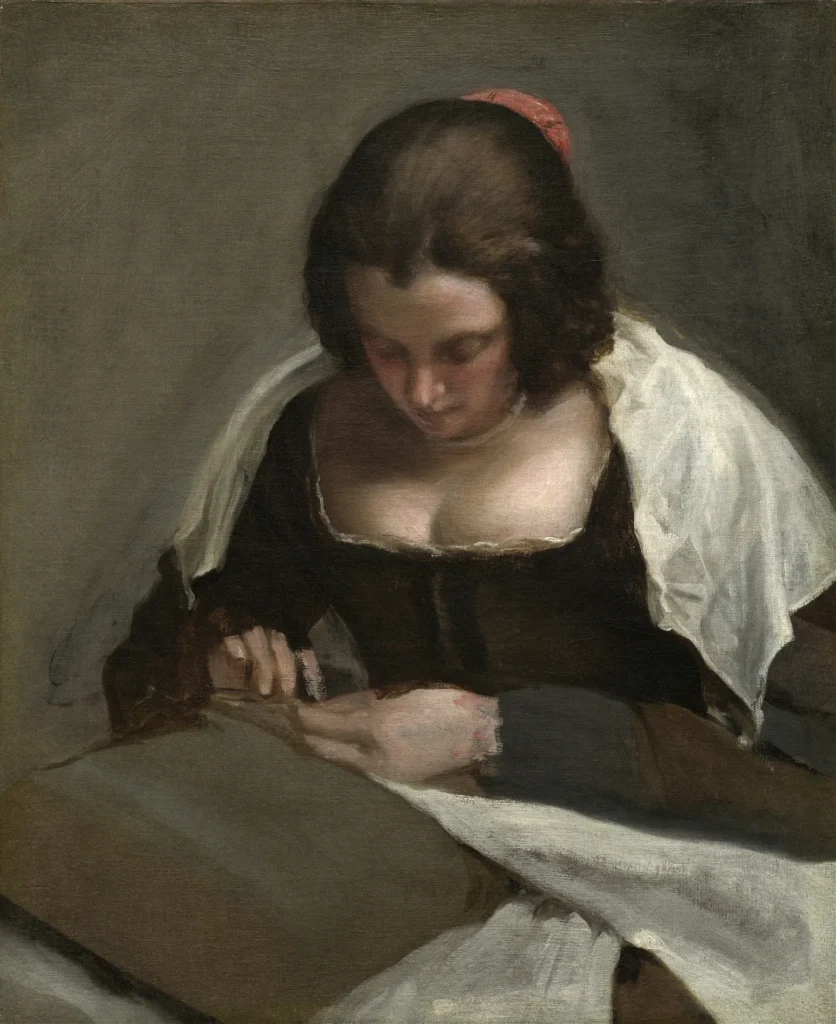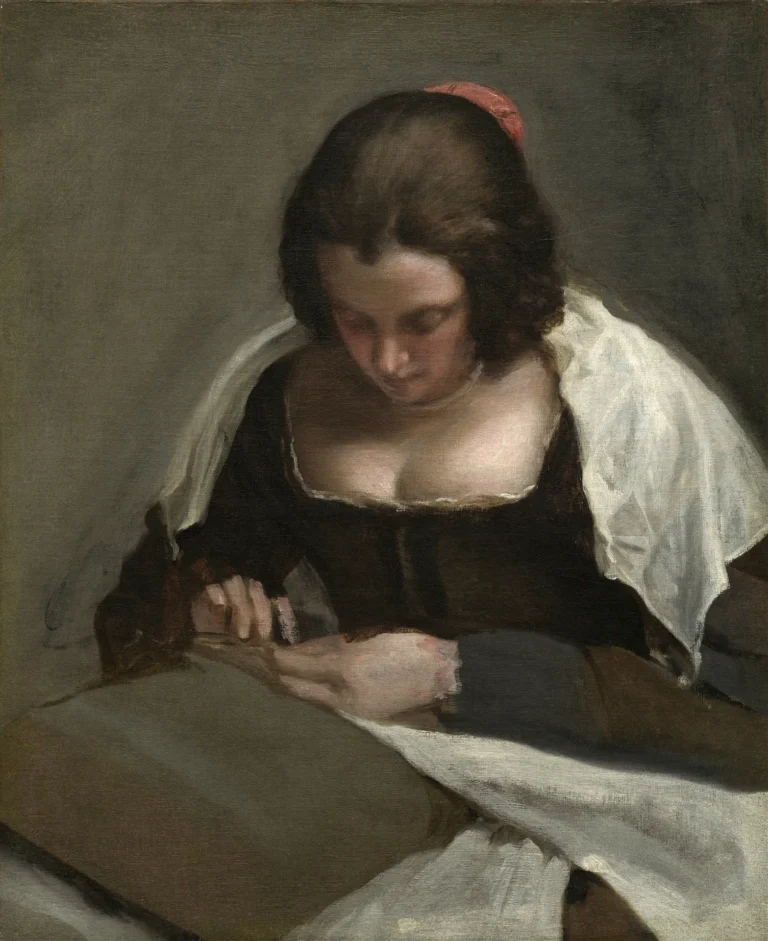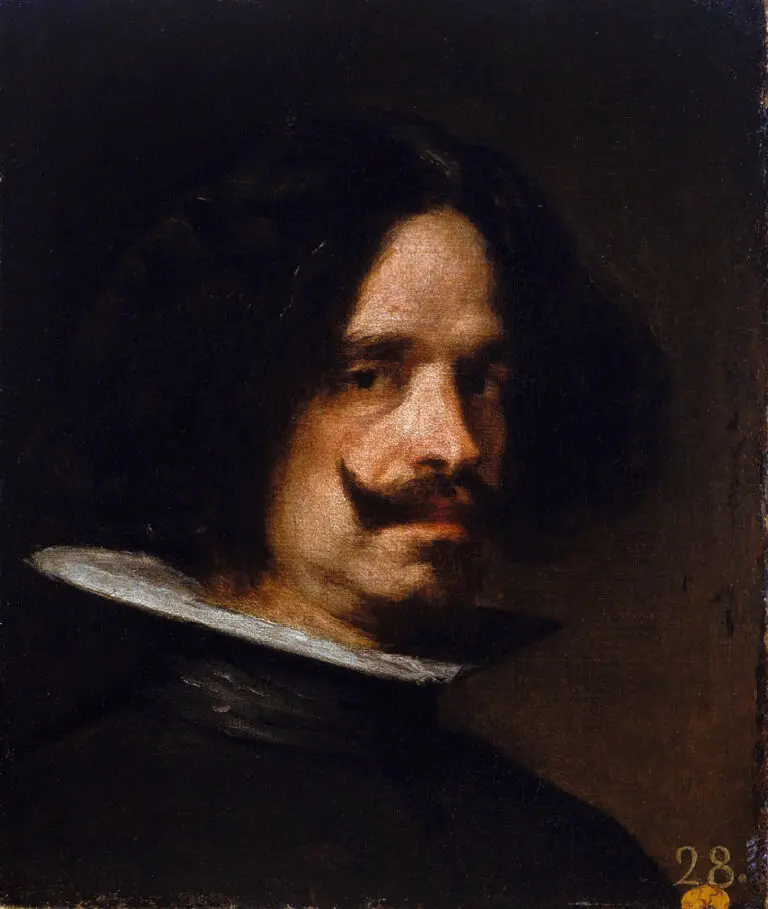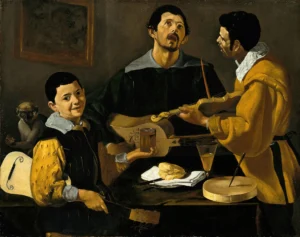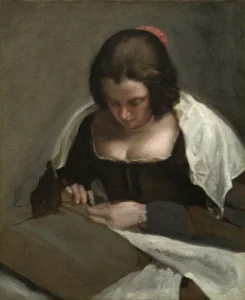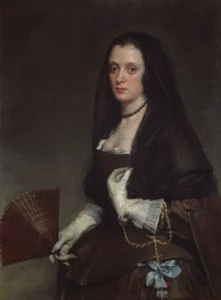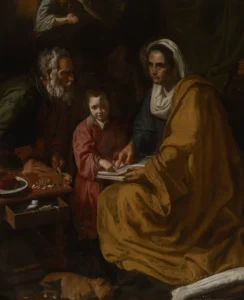The Needlewoman (c. 1635-1643)
The Needlewoman, also known as La costurera, is a captivating oil-on-canvas painting by Diego Velázquez that beautifully captures a moment of domestic tranquility. Depicting a woman engaged in needlework, the unfinished nature of the piece reveals Velázquez's innovative painterly methods and his departure from earlier dramatic lighting styles. With a serene yet sophisticated palette and thoughtful composition, this artwork exemplifies the masterful skills of one of Spain's most esteemed painters.
1635 - 1643
About the Artwork
Did You Know
Liked what you see? Add it to your collection.
Enjoyed reading? Share it.
... continued
The Needlewoman
Artist and Context
Diego Velázquez, one of the greatest masters of seventeenth-century Europe, was established as the court painter to Philip IV in Madrid by the age of 24. For nearly forty years, he primarily painted innovative portraits of the monarch and the royal family. However, in his personal time, Velázquez explored other subjects that interested him, and *The Needlewoman* is one such work.
Subject and Composition
The painting depicts a woman from the waist up, engaged in needlework. She has pale skin, brown hair, and rosy cheeks, and is dressed in a dark corset and a white fabric draped over her shoulders. The woman's face is the most fully realized part of the painting, with the rest of the composition left unfinished. Her hands and arms are sketched in briefly, resting on a tan cushion in her lap. The background of the painting is a uniform olive-tan color, matching the cushion.
Technique and Style
Velázquez abandoned the tenebrism of his earlier works, characterized by extreme contrasts of light and dark, in favor of a softer style. In *The Needlewoman*, he used gentle light and deep, translucent shadows to reveal the planes of the face and sculpt the figure. The painting remains unfinished, allowing a glimpse into Velázquez's working method. He began with a gray-green or warm gray-brown base coat, sketched the main forms with darker paint, and then applied broad areas of opaque color. The face was built up with transparent layers of glaze, giving it a lifelike appearance under softly diffused light.
Attribution and Provenance
The attribution of the painting to Velázquez has been generally accepted, although there was some debate. In 1944, biographer F. J. Sánchez Cantón suggested that the painting might have been completed by Velázquez's son-in-law, Juan Bautista Martinez del Mazo. However, the traditional attribution to Velázquez is supported by the inventory of his studio at the time of his death. The painting was acquired by Andrew W. Mellon in 1927 and later became part of the National Gallery of Art collection in 1937.
Location
*The Needlewoman* is housed at the National Gallery of Art in Washington, D.C., where it remains one of the notable works in the collection.
Additional Notes
The subject's identity is not certain, though it has been proposed that she might be Francisca Vélazquez del Mazo, the artist's daughter, based on similarities with another painting, *The Lady with a Fan*. The painting's unfinished state provides valuable insights into Velázquez's artistic process and his fluid, painterly style, which was influenced by Venetian artists such as Titian.




